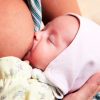Europe
The Times January 17, 2006
Household insecticides could double child leukaemia risk
By Sam Lister, Health Correspondent
CHILDREN frequently exposed to household insecticides used on plants, lawns and in head lice shampoos appear to run double the risk of developing childhood leukaemia, research suggests. A study by French doctors, published today in the journal Occupational and Environmental Medicine, supports concerns raised in recent years about the use of toxic insecticides around the home and garden – including plant sprays, medication shampoos and mosquito repellents – and a possible correlation with increased rates of acute leukaemia in children.
The latest study by Inserm, France´s national institute for medical research, was based on 280 children who had acute leukaemia, newly diagnosed and 288 children matched for sex and age but disease free.
Detailed interviews were carried out with each mother. These included questions about the employment history of both parents, the use of insecticides in the home and garden and the use of insecticidal shampoos against head lice.
It showed that the risk of developing acute leukaemia was almost twice as likely in children whose mothers said that they had used insecticides in the home while pregnant and long after the birth.
Exposure to garden insecticides and fungicides as a child was associated with a more than doubling of disease occurrence. The use of insecticidal shampoos for head lice was associated with almost twice the risk.
Describing the links as “significant”, the authors said that preventive action should be considered to ensure that the health risks to children were as small as possible. A group of pesticides known as carbamates, which are present in plant treatments, lice shampoos and insect sprays, are most commonly linked to cases of leukaemia.
There are three main carbamates used in the UK – carbaryl, carbofuran and carbosulfan.
Head lice products containing carbaryl are now restricted to prescription after a report by a government committee that gave warning of potential carcinogenic properties.
Florence Menegaux, the lead researcher based at the Paris headquarters, and her fellow authors said that no one agent could be singled out and a causal relation between insecticides and the development of acute childhood leukaemia “remains questionable”. But they said that the patterns revealed suggested that the results should be acted on and “preventative action” considered.
Leukaemia is the term used to describe a number of cancers of the blood cells. In children about 85 per cent of these are acute lymphoblastic leukaemia, and acute myeloid leukaemia accounts for most of the rest.
Leukaemia makes up about a third of all cancers in children and currently kills more than any other disease in the UK. Of the 500 children under the age of 15 who have the disease diagnosed each year, about 100 die. Research has shown that boys are 10 per cent more likely than girls to suffer the disease.
In the late 1960s, the mortality rate for leukaemia among children was about 26 deaths per million of the population in England and Wales. This dropped to about 10 by the late 1990s. But the incidence rate increased – from about 40 to 45 cases per million – over the same period.
The number of new cases being diagnosed has been rising for at least 40 years, particularly in the under-5s.
Scientists believe that the cancer starts in the womb, with a second event triggering the disease´s development in childhood. Studies are continuing to determine whether this trigger is genetic, environmental, dietary or related to other factors.
The possible link to pesticides remains hotly debated, with many scientists disputing the suggestion that it is a significant factor. Some have drawn attention to a potential “cocktail effect”, when apparently safe chemicals cause problems if combined with others.
Although products sold for use in homes and gardens are tested, mixtures of pesticides are not generally tested because of the number of permutations involved.
https://www.timesonline.co.uk/article/0,,13509-1988878,00.html

